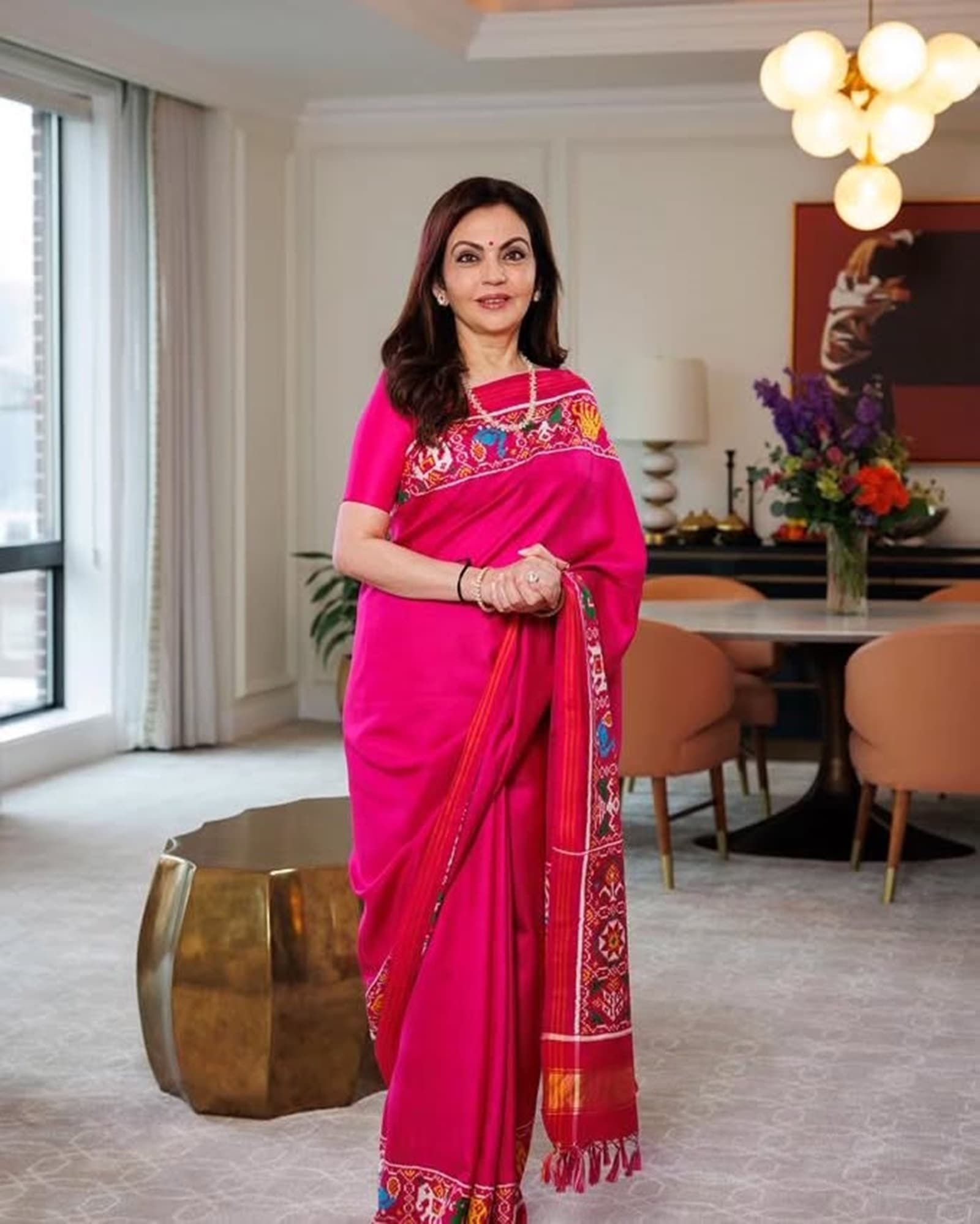📣 For more lifestyle news, click here to join our WhatsApp Channel and also follow us on Instagram
Gujarat’s Patola: How the textile stays relevant despite challenges
From royal courts to modern runways, patola’s elegance continues to weave its magic.
 Patola textiles, with origins tracing back to ancient Gujarat, were historically worn by royalty and aristocrats and were considered a mark of affluence and power.
(Source: Wikimedia Commons)
Patola textiles, with origins tracing back to ancient Gujarat, were historically worn by royalty and aristocrats and were considered a mark of affluence and power.
(Source: Wikimedia Commons)Few Indian textiles embody the grandeur and artistry of the patola. This intricate handwoven fabric, hailing from Gujarat, has graced the wardrobes of royals and artisans alike. Patola is celebrated not only for its luxurious aesthetics but also as a shining example of slow fashion—an ethical and sustainable approach that values quality over mass production.
Patola recently captured global attention when Nita Ambani, known for her love of exquisite Indian textiles, donned a stunning pink double ikat patola sari at the White House State Dinner honouring Prime Minister Narendra Modi. Crafted over six months by artisans Dushyant and Vipul Parmar, the sari had intricate animal patterns and bright hues. Another memorable moment was at the anniversary celebration of Nita Mukesh Ambani Cultural Centre (NMACC), where she wore a traditional red patola paired with a striking meenakari neckpiece.
For the next installment of our ongoing series Indian Textiles 101, we are looking at patola.
The rich history of patola
Patola textiles trace their origins to ancient Gujarat and were historically worn by royalty and aristocracy as symbols of affluence and power. According to Lakshmi Surya, assistant professor at the School of Design, Alliance University, references to patola date back to 1342 AD. Derived from the Sanskrit word “Pattakulla,” meaning silk fabric, patola textiles were integral to auspicious occasions and temple rituals.
Surya added that patola originated in Patan, the capital of the Chaulukya dynasty (also known as the Solanki rulers) between the 8th and 11th centuries. “The geometric patterns seen in patola fabrics mirror the intricate carvings of Rani ki Vav (the Queen’s Stepwell), a UNESCO World Heritage Site, and this proves the deep artistic connections between Gujarat’s architecture and its textiles,” she said.
This intricately handwoven textile is celebrated for its vibrant colours, geometric patterns, and durability. Today, it is celebrated globally, with its artistry showcased in sarees, dupattas, and ceremonial attire, particularly during weddings and grand occasions.
 Nita Ambani wore a pink patola sari for the US State Dinner at the White House. (Source: @nmacc/Instagram)
Nita Ambani wore a pink patola sari for the US State Dinner at the White House. (Source: @nmacc/Instagram)
How is patola made?
According to Dr Saurabh Kumar, dean, MIT-WPU’s School of Design, the weaving process of patola is a meticulous art passed down through generations. “It employs a resist-dyeing technique known as double ikat, where both warp and weft threads are tie-dyed before weaving. This painstaking process ensures that patterns align perfectly, resulting in a reversible design of unmatched precision,” he said.
Surya said that the labour-intensive process can take weeks or even months to complete, making each patola piece a unique masterpiece. “Patola textiles come in various forms, such as the Rajkot patola, characterised by single ikat weaving, and the more popular Patan patola, known for its intricate double ikat craftsmanship,” he said.
Challenges faced by the industry
Despite its grandeur, the patola weaving industry faces modern challenges. Nishit Gupta, director at KALKI, pointed out that high labour costs and competition from mass-produced replicas threaten its survival. Rising production costs and declining interest among younger generations add to these hurdles.
However, contemporary designers are infusing new life into the craft. By incorporating patola motifs into lighter fabrics, accessories, and modern apparel like kurtas and dupattas, they are bridging the gap between tradition and innovation. Dr. Kumar highlights that these efforts are helping patola resonate with younger audiences, ensuring the preservation of this extraordinary art form for generations to come.
📣 For more lifestyle news, click here to join our WhatsApp Channel and also follow us on Instagram



- 01
- 02
- 03
- 04
- 05
























